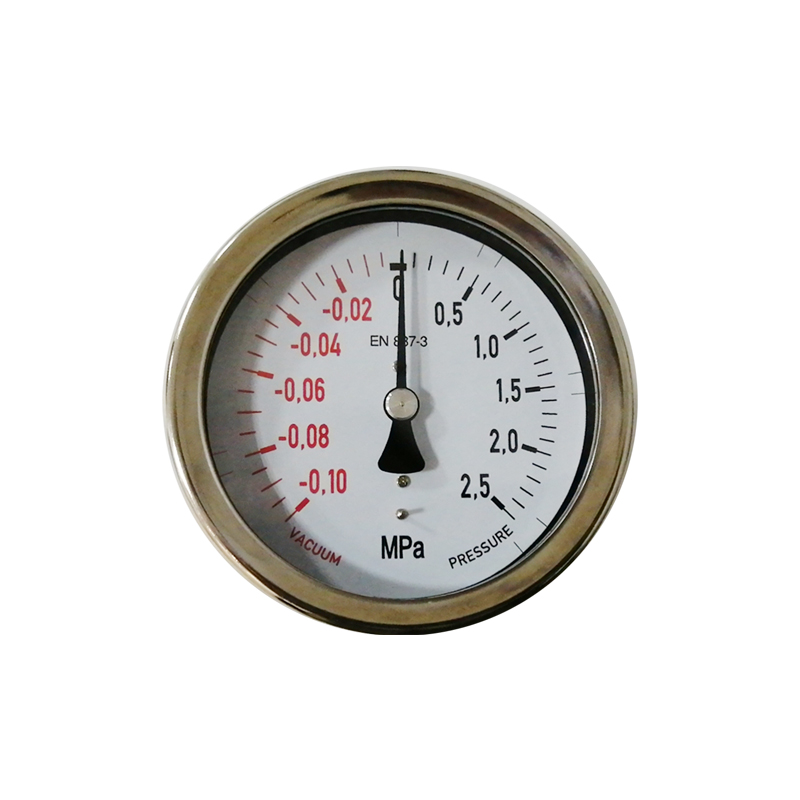
Авг . 12, 2024 22:46 Back to list
Exploring the Functionality of Capillary Type Differential Pressure Gauges in Various Applications
Understanding Jah Capillary Type Differential Pressure Gauge
In various industrial applications, the precise measurement of pressure differences is critical for processes ranging from fluid dynamics to HVAC systems. Among the instruments designed for this purpose, the Jah capillary type differential pressure gauge stands out for its accuracy and reliability. This article delves into the functionality, advantages, and applications of the Jah capillary type differential pressure gauge, emphasizing its significance in modern industrial practices.
What is a Capillary Type Differential Pressure Gauge?
A differential pressure gauge is designed to measure the difference in pressure between two points within a system. The capillary type employs a fine capillary tube connecting two pressure points, allowing the gauge to register minute changes in pressure. The Jah design incorporates innovations that enhance sensitivity and accuracy, making it suitable for various demanding applications.
The operational principle of the Jah capillary gauge is based on the use of a liquid column. When the pressures at two different points differ, the liquid in the capillary tube either rises or falls, resulting in a measurable displacement. The gauge is calibrated to convert this displacement into digital or analog readings that can be easily interpreted by operators.
Advantages of the Jah Capillary Type Differential Pressure Gauge
1. High Sensitivity One of the primary advantages of the Jah capillary gauge is its ability to detect minor pressure changes. The capillary design allows for a greater responsiveness to pressure variations, making it ideal for applications where precision is paramount.
2. Wide Range of Operating Conditions Jah capillary gauges can be designed to operate in a variety of environmental conditions. They can function effectively across a wide range of temperatures and pressures, making them versatile for different industrial sectors, from petrochemicals to pharmaceuticals.
3. Ease of Maintenance Unlike some electronic pressure gauges that may require frequent recalibration or maintenance, the Jah capillary type is generally low-maintenance. Its mechanical design minimizes the potential for electronic failure, ensuring long-term reliability.
jah capillary type differential pressure gauge

4. Robust Construction These gauges are typically made from durable materials capable of withstanding harsh industrial environments. Their ability to resist corrosion and mechanical wear enhances their lifespan and reduces the frequency of replacements.
Applications of the Jah Capillary Type Differential Pressure Gauge
The Jah capillary type differential pressure gauge finds its applications in various fields, highlighting its versatility
- Fluid Dynamics In industries dealing with liquid and gas flows, such as oil and gas, these gauges are employed to monitor pressure drops across filters, pumps, and valves, ensuring optimal system performance.
- HVAC Systems In heating, ventilation, and air conditioning systems, the gauges are crucial for maintaining pressure balance, helping to regulate air flow and improve energy efficiency.
- Pharmaceuticals Given the stringent requirements for cleanliness and accuracy in pharmaceutical manufacturing, the Jah capillary gauge provides reliable readings that help maintain critical process conditions.
- Food and Beverage In food processing plants, maintaining the correct pressure differential during operations can greatly impact product quality. The Jah gauge offers precise measurements that ensure compliance with safety standards.
Conclusion
The Jah capillary type differential pressure gauge is an essential instrument in various industries, offering high sensitivity, robust construction, and versatility. Its ability to accurately measure pressure differentials makes it a trusted choice for professionals seeking reliability and precision in their operations. As industries continue to evolve and require more advanced measurement solutions, innovations like the Jah capillary gauge will remain at the forefront, enabling businesses to optimize their processes and enhance overall efficiency.
-
High-Precision 5 Valve Manifold Differential Pressure Gauge Suppliers
NewsApr.29,2025
-
High-Precision Diaphragm Vacuum Pressure Gauges Manufacturers & Quotes
NewsApr.29,2025
-
Omega Differential Pressure Gauges High Accuracy & Durability
NewsApr.28,2025
-
Low Pressure Differential Pressure Gauges Precision Solutions & Quotes
NewsApr.28,2025
-
Digital Diaphragm Pressure Gaauge Precision Measurement & OEM Quotes
NewsApr.28,2025
-
Differential Pressure Gauge China Price High-Accuracy & Best Quotes
NewsApr.28,2025
